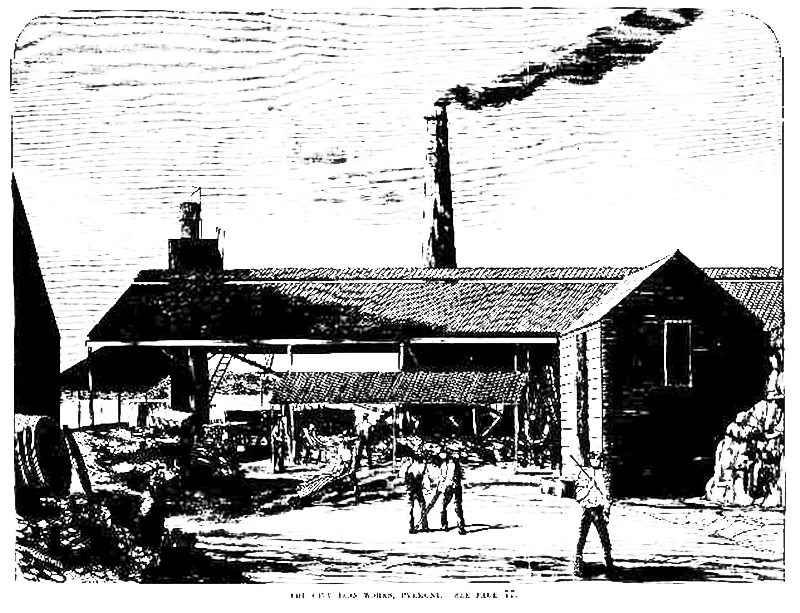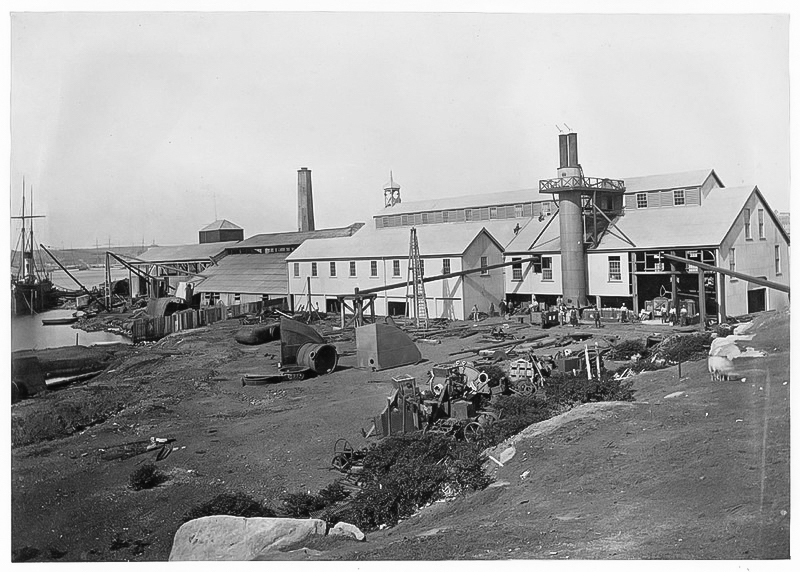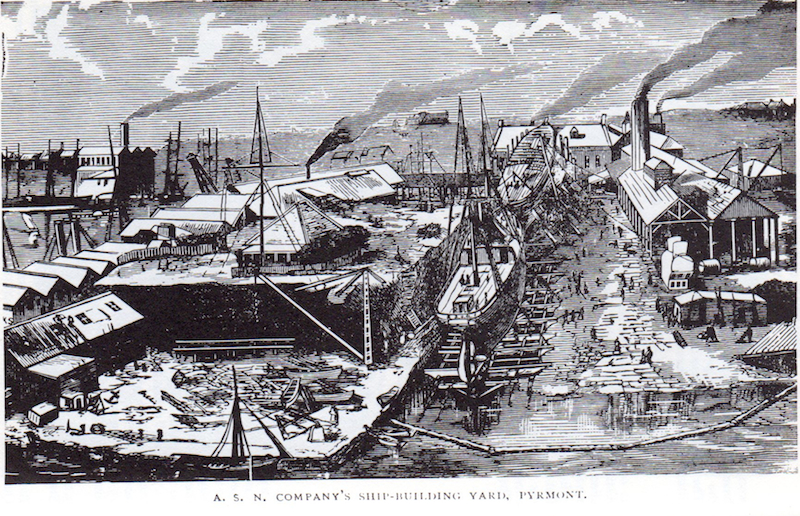Industry > Metal Working
Metal Working
Metal working was prompted by the establishment of shipyards – Thomas Chowne by 1851 followed by Goodlet & Smith. In 1855 the Australasian Steam Navigation Company (ASNC) acquired Darling Island and built slipways and workshops. The need for metal works then attracted Fyfes Iron Foundry in 1855 and the City Iron Works in 1865.
During the 1870s and 1880s several engineering works were established, mainly on Wattle Street or Pyrmont Bridge Road to be close to the railway or the port. Close to the City and the shipyards, with access to the harbour, yet out of sight and sound, Pyrmont was ideally placed. City Iron Works was so well concealed that “no one would dream of their existence save for vapour from smoke-shafts, and the clash and clang of heavy hammers” – Illustrated Sydney News, 26 October 1870.
These works were not sophisticated. In City Iron Works “ancient iron articles of every conceivable shape … from great broken masses of huge disused machinery down to nuts and bolts and even nails … are made into bundles and placed into ovens: … they are then kneaded and worked and reproduced in rude flat slabs of about six inches in width and an inch in thickness.”
More advanced was the new CSR refinery, and (by the 1880s) Davey & Sands engineering works nearby: this included a boilermaker’s shop, a 600 ton slip, and a radial drill made on-site.
As industrial imports became cheaper and more available, most of these works were squeezed out by larger enterprises, or moved to more spacious premises elsewhere in Sydney or rural New South Wales.




